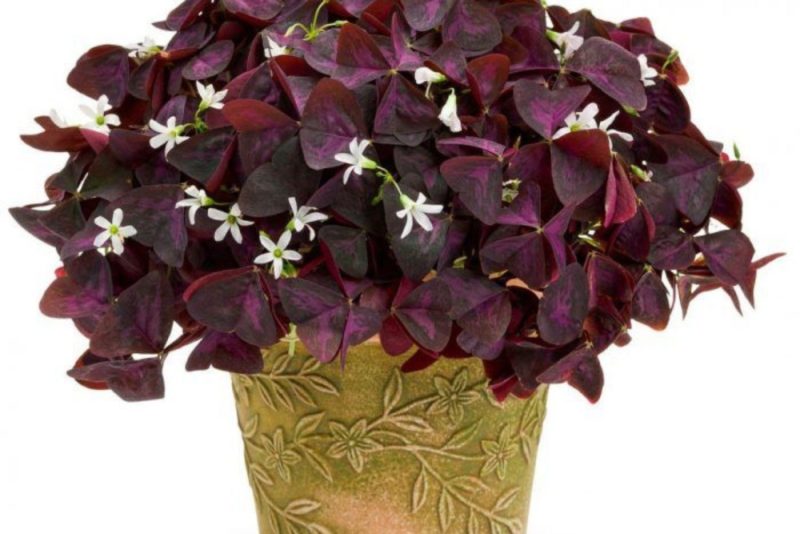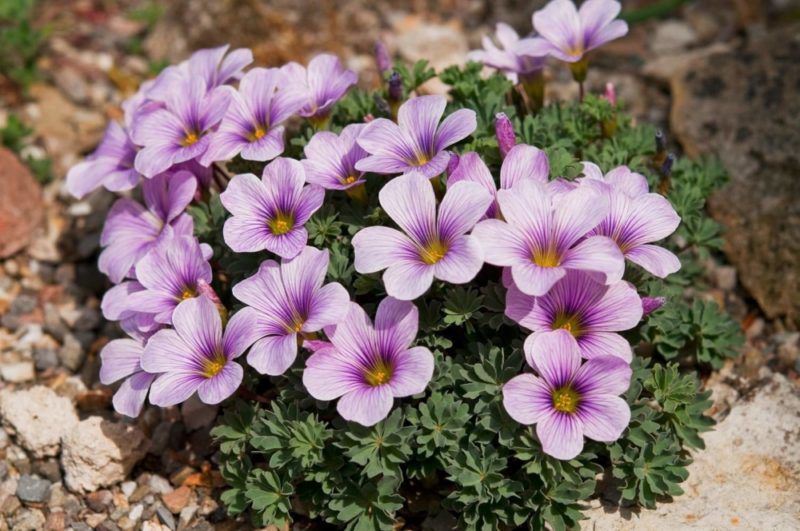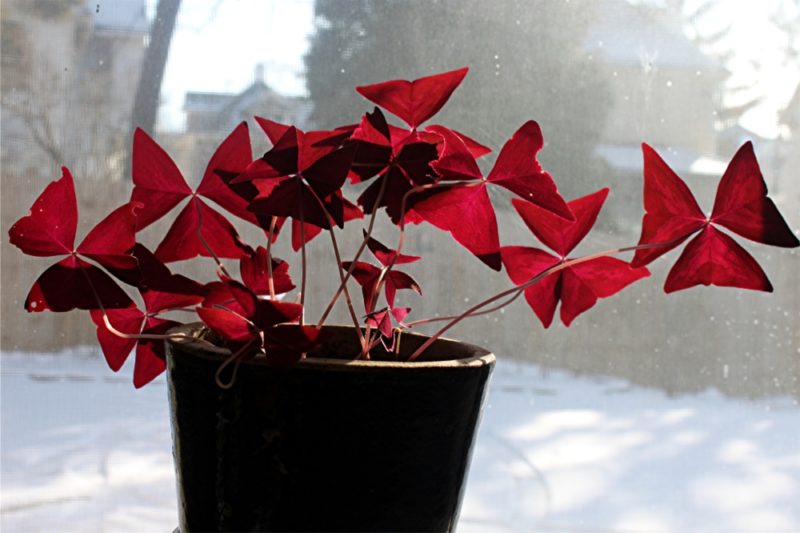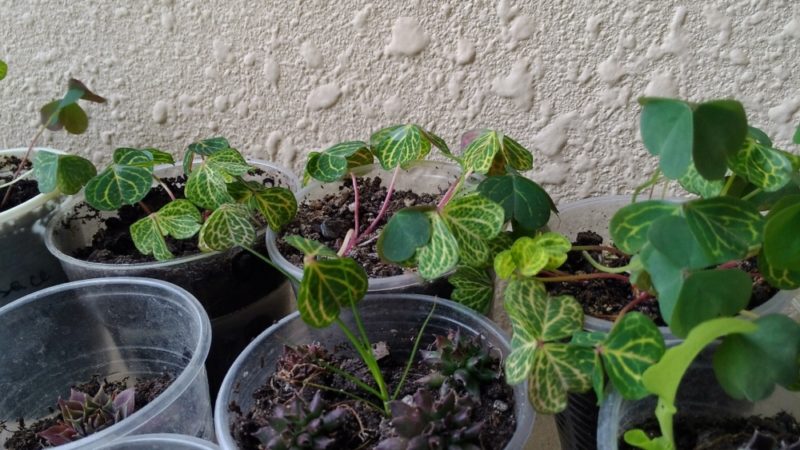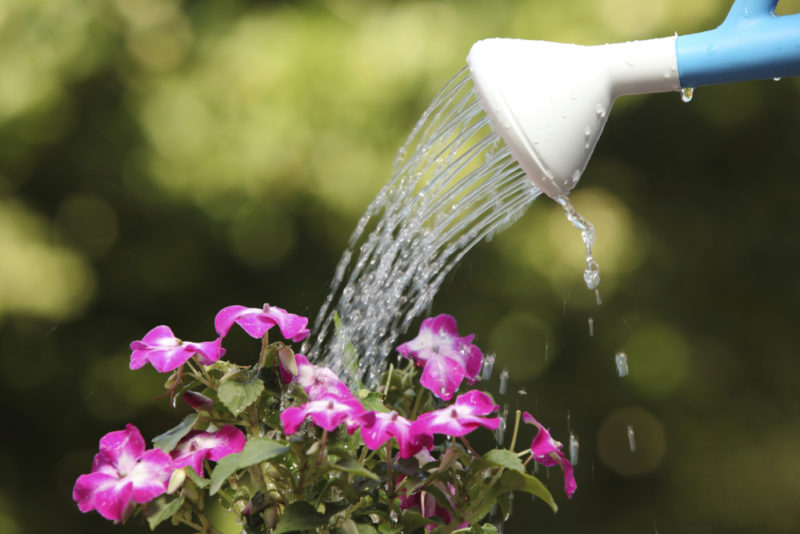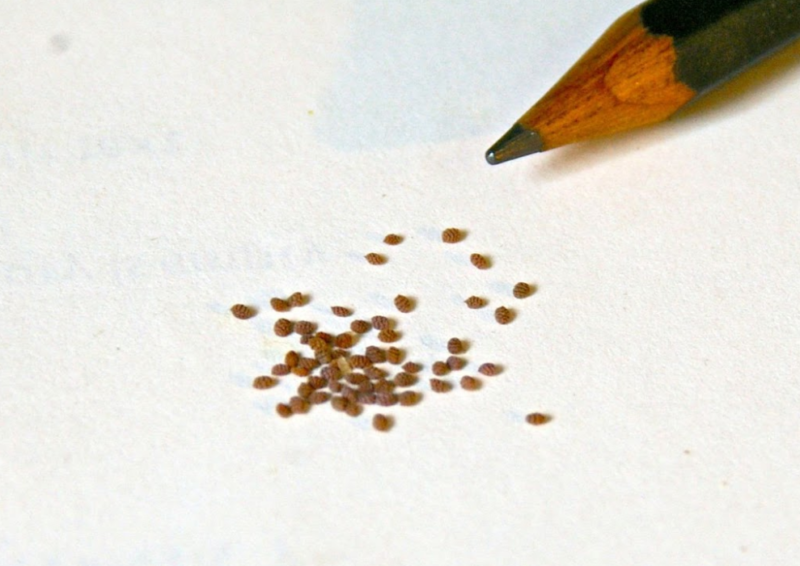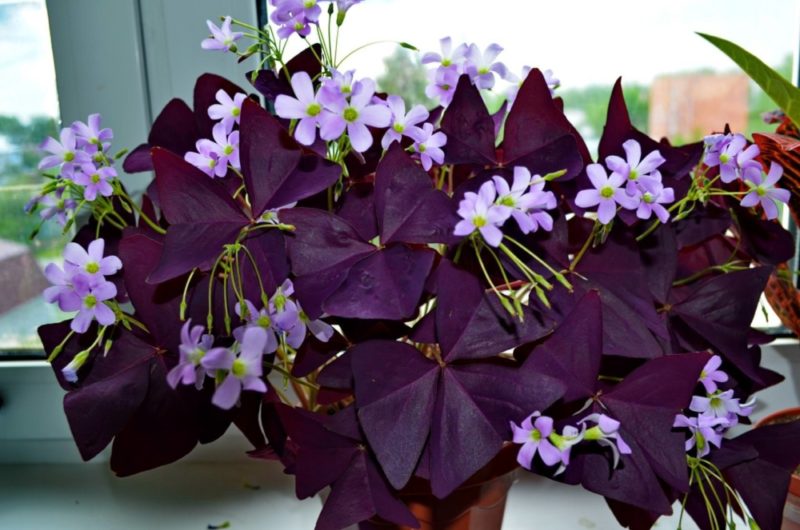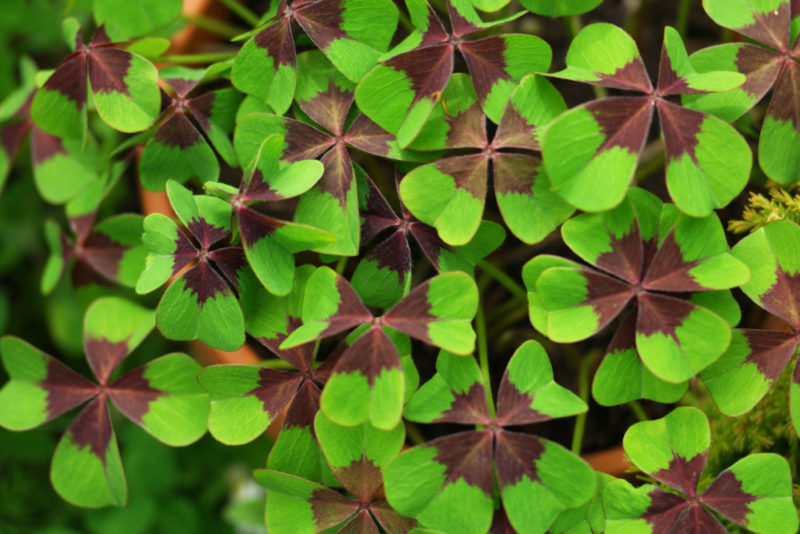Oxalis flower is one of the most popular plants grown at home. It belongs to the acid family. The name of these representatives of the flora speaks for itself: their leaves have a sour taste.
Material Content:
Description of species and varieties of oxalis
Oxalis is distinguished by a variety of species and ease of reproduction. Unpretentious, grows well at home. It has an unusual appearance - foliage of a reddish or purple color, depending on the variety. In case of bad weather and in the evening, the plates tend to fold. The buds themselves are small. There are species with a yellow, lilac, pink color. Experienced gardeners are able to control flowering, planting crops at different times of the year.
Types of Sour
- Four-leaf oxalis - suitable for growing on the windowsill and in garden areas. Leaves of light green color with a brownish center.
- Oxalis vulgaris - up to 7–9 cm high. In structure resembles clover. The buds are white.
- Oxalis multicolored - unstable to frost. It has a bright unusual shade. Outside - red stripes, inside - completely white.
- Tuberous oxalis - resembles potatoes in appearance. The flowers are yellow.
- Oxalis triangular - not very high. Color - deep purple. On the leaves are purple spots.
- Oxalis Bouvy is a delicate and fragile plant with pink flowers.
- Oxalis ferruginous - resistant to frost. Leaflets are small, buds are white at the base and pink at the end.
- Oksalis Obtusa - unpretentious in leaving.Green leaves slightly down. Flowers are not very large with an orange tint.
Varieties of plants are also a great many.
The most popular of them:
- Kislitsa Alba.
- Oxalis oxalis iron cross.
- Oxalis adenodis.
- Oxalis brasiliensis Pink-White.
- Kislitsa Burgundy Wine.
- Sour caprina.
- Oxalis Coral.
To plant bushes at home, usually use a four-leaf or triangular plant.
Basic growing requirements
Like all onion crops, oxalis needs time to relax. Do not throw away the bush if the plant has withered a little. With constant and proper care, it will bloom again. Foliage dying is a sign that the dormant period is approaching.
Often this culture is grown in pots. There is a belief that acidic brings good luck to the house. Therefore, it is so popular among fans of indoor flowers.
Indoors, sour acid is planted at any time. Bulbs should be kept in the refrigerator until planting. To make a designer accent, planting should be very tight to each other, since rarely planted plants will not make the proper impression. The flower is very unpretentious, but loves a lot of light. In this case, direct sunlight should be avoided.
A houseplant is used as food. But here it is important not to overdo it.
The oxalic acid that it contains can cause health problems in the long run.
Most often it is used as an ingredient for salad.
Planting flowers at home
Planting oxalis is possible both in summer and in winter, because in an apartment the temperature is always the same on average. Any type of soil is suitable for planting. But it is better to use the land purchased in the store. And also you can do it yourself. To do this, mix in equal proportions leaf and soddy soil, peat, sand. Very nutritious earth provokes rapid growth of foliage, but inhibits flowering. Therefore, it is necessary to observe the measure.
Plant young bulbs or tubers. In one pot - from 6 to 8 seedlings. Too deep should not be. Bulbs are slightly laid on top of the ground and sprinkled. The plant has the ability to quickly take root. In a month, it will become a full-fledged flower.
How to care for acid
The plant is unpretentious in care - loves sunlight, subject to slight shade. And you also need to protect the culture from drafts.
Room temperature is ideal for acid. But we must remember that in winter on the window the thermometer should not fall below 16 degrees.
Undemanding culture and the issue of air humidity. Oxygen does well at standard rates without the use of special irrigation methods.
The flower needs regular heavy watering, especially in the summer months. But do not overdo it. Excess water and its further stagnation ruins the roots. With the onset of cold weather, irrigation is reduced. In winter, it is important to ensure that the ground is constantly wet.
During dormancy, oxalis freezes and ceases to grow. Watering should be less frequent than usual. In case of loss of foliage, it should be completely stopped. The flower is transferred to a cooler room, for example, a warmed balcony.
Fertilize only during flowering or growth (2-3 approaches per week). The usual complex mineral fertilizer is suitable.
Breeding methods
Several breeding methods can be distinguished; all of them are quite simple.
Child bulbs
The easiest and most proven way. Part of the plant is separated from the main rhizome, planted, placing several roots in the same container, covered with earth from above. They are taken to a cool place with dim lighting, periodically slightly moisten the soil. After the formation of seedlings, transfer to a bright room. After a month, the sour should grow well with leaves.
Rhizome division
A simple method that does not take much time. After the appearance of new leaves, the bush is dug up, cleaned of soil, washed with a solution of potassium permanganate.They further divide it into fractions, treat the sections with charcoal, and plant them in pots. Lighting should not be too strong, watering - as the earth becomes dry. After two weeks, the plant begins to feed twice a month.
Leaves
You need to choose a tall flower with many plates. The sheet is cut off and dipped in water. After a while, the root begins to grow. When it reaches a significant size, you can transplant the flower into containers. For a young plant, constant watering is required.
Seeds
This method is rarely used when growing oxalis at home. But if desired, it can be applied by mixing humus, peat and sand in a ratio of 4: 4: 1. Sow seeds and cover the container with a piece of glass to create conditions comparable to greenhouse ones. Every day it is necessary to ventilate the seedlings and moisten the soil.
Protection against diseases and pests
Room acid has a strong immunity to ailments and is not afraid of pests. But sometimes as a result of improper care, she can get sick.
Too frequent watering provokes the appearance of gray rot and fusarium. To help rid the plant of this scourge, foundationazole will help. The first signs of the disease are dry leaves and wilted flowers. Drying of the plates is also observed if the flower spends a lot of time in direct sunlight, getting burns. Sometimes the problem is caused by dry air in the room.
Often the cause of malaise is the lack of adaptation of the young flower in a new place. Need to give him time to acclimatize.
When the soil dries, oxalis loses its ability to bloom. It is necessary to irrigate it periodically.
Of the pests, a spider mite, aphid, and scutellum most often attack it. The first insect easily removes the actellik, the second - soap solution, the third - actar.
Signs and superstitions
According to ancient beliefs, sour acid brings happiness, luck and success to the house. It is of particular value to family people, smoothing out its presence conflicts, quarrels and disagreements.
In European countries, this plant is often given for housewarming. The flower promotes harmony and well-being. However, such a gift can be afforded exclusively by a close friend or relative.
This culture also helps in matters of love. The girl who put him at home will soon meet a nice young man. Presenting the plant to a lonely friend is a good sign that promises a meeting with the second half.
If the flower is in the apartment of a couple in love, they will get married soon. And the marriage will be long and happy.
Oxalis is considered a source of positive energy. He is able to deal with negativity in the house, remove depression, bad mood, and spleen.
There are no signs indicating the negative influence of the flower. It symbolizes well-being, luck and love.
Oxygen is a wonderful plant that can be grown at home. Its popularity is due to the unusual look that allows you to decorate any room, as well as the positive energy that emits.


